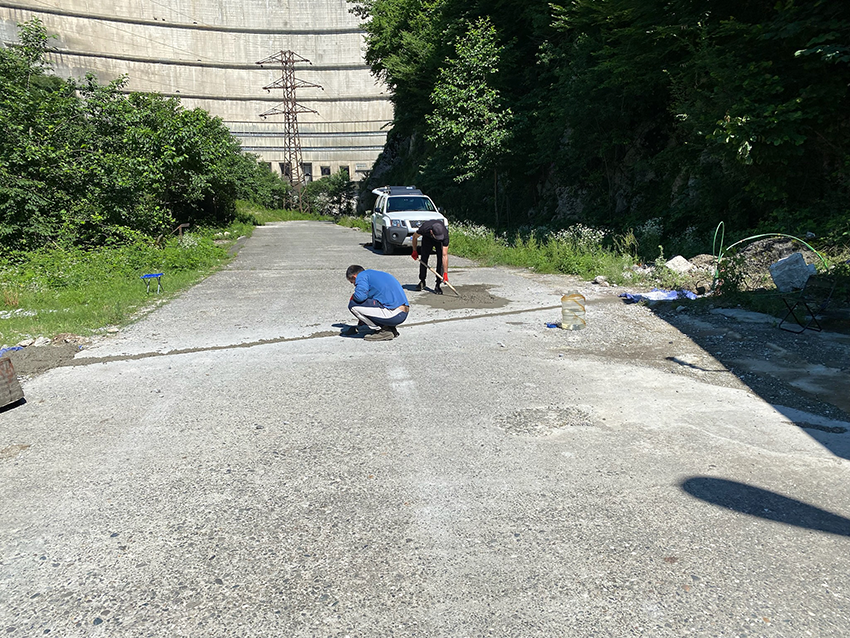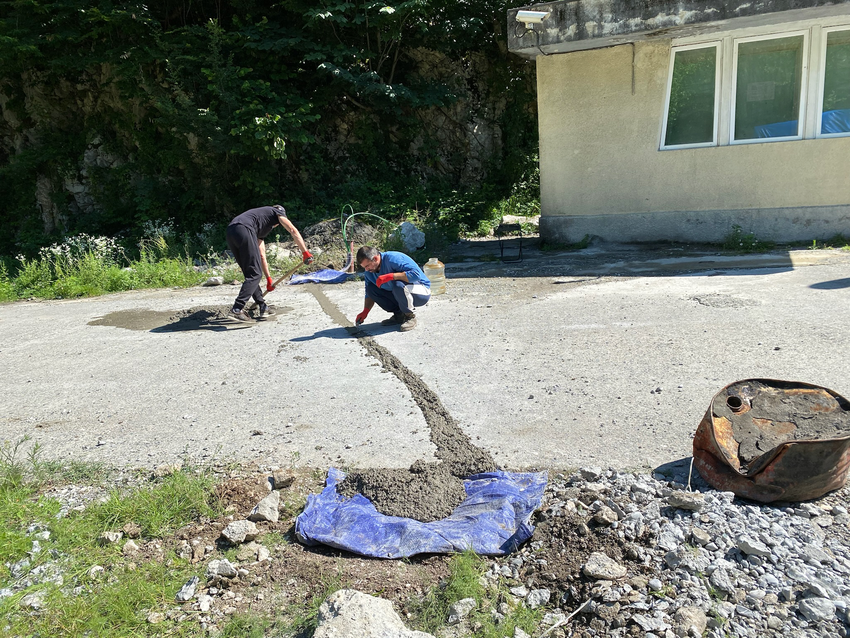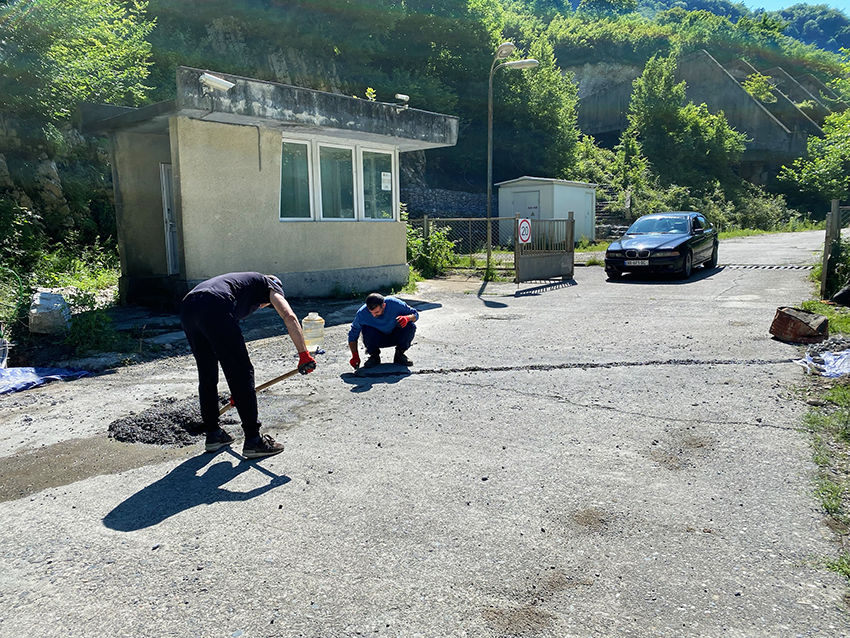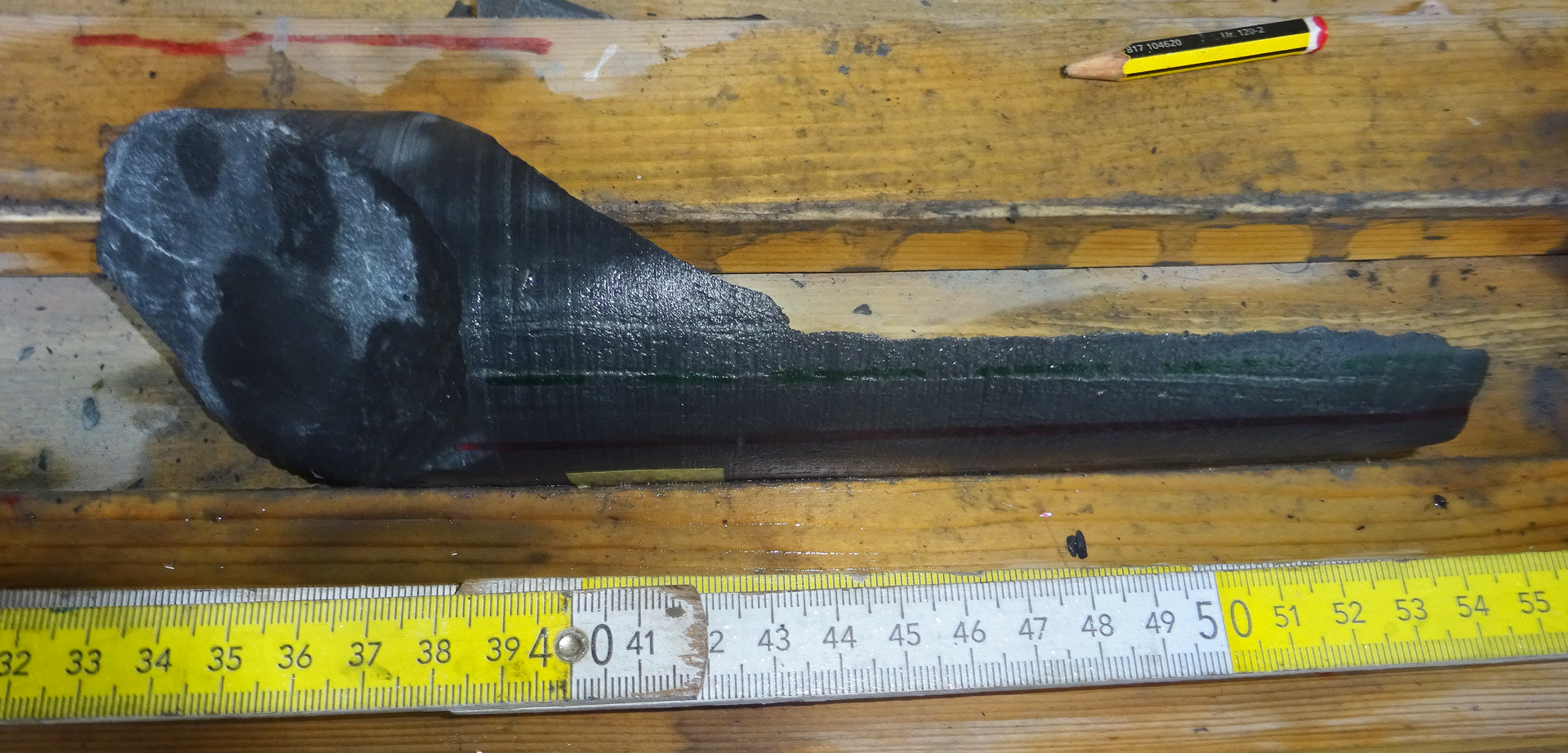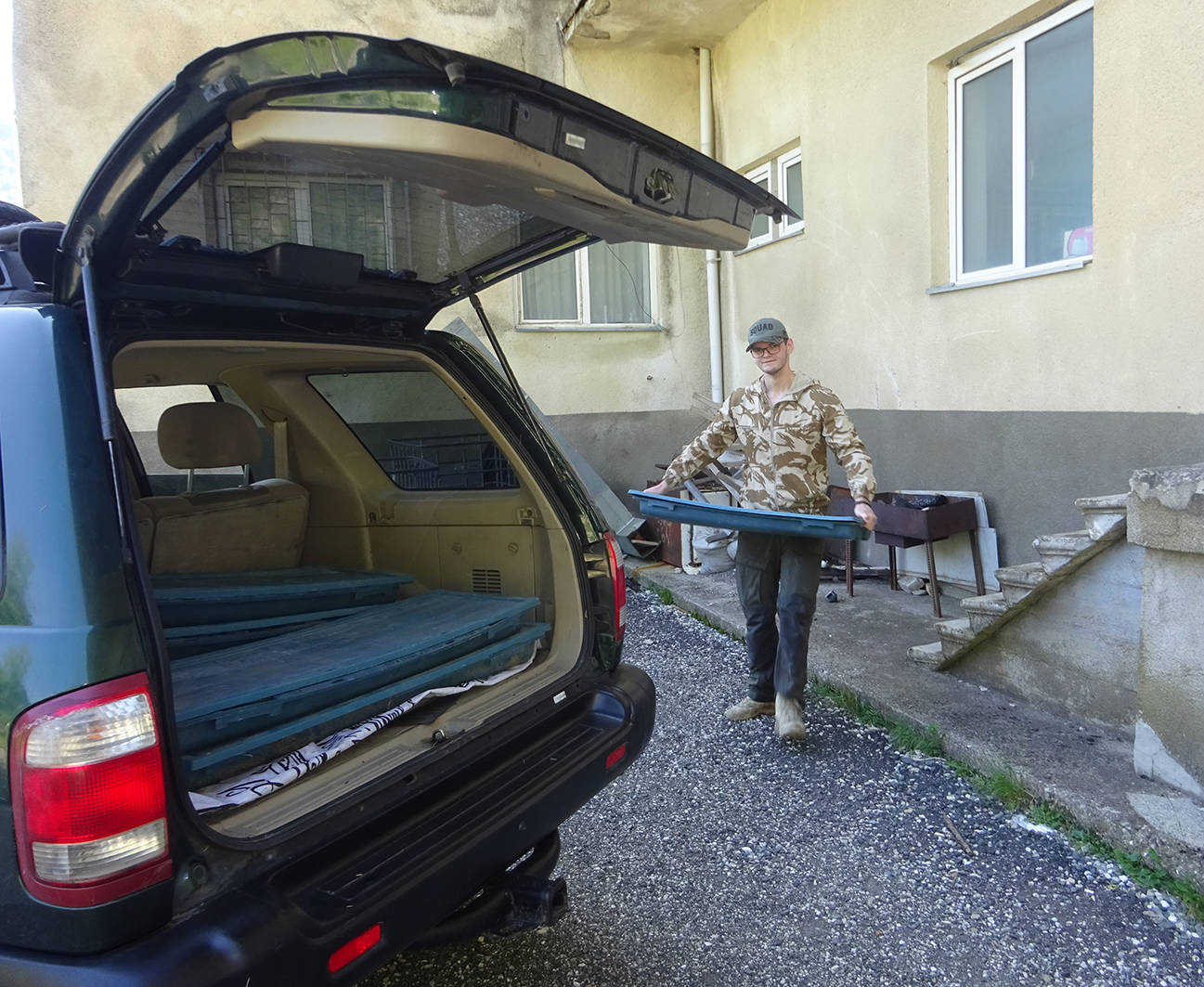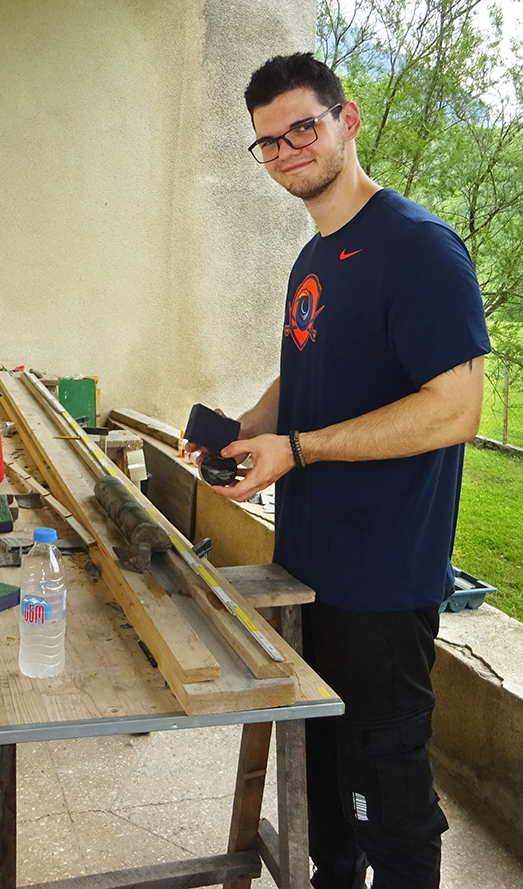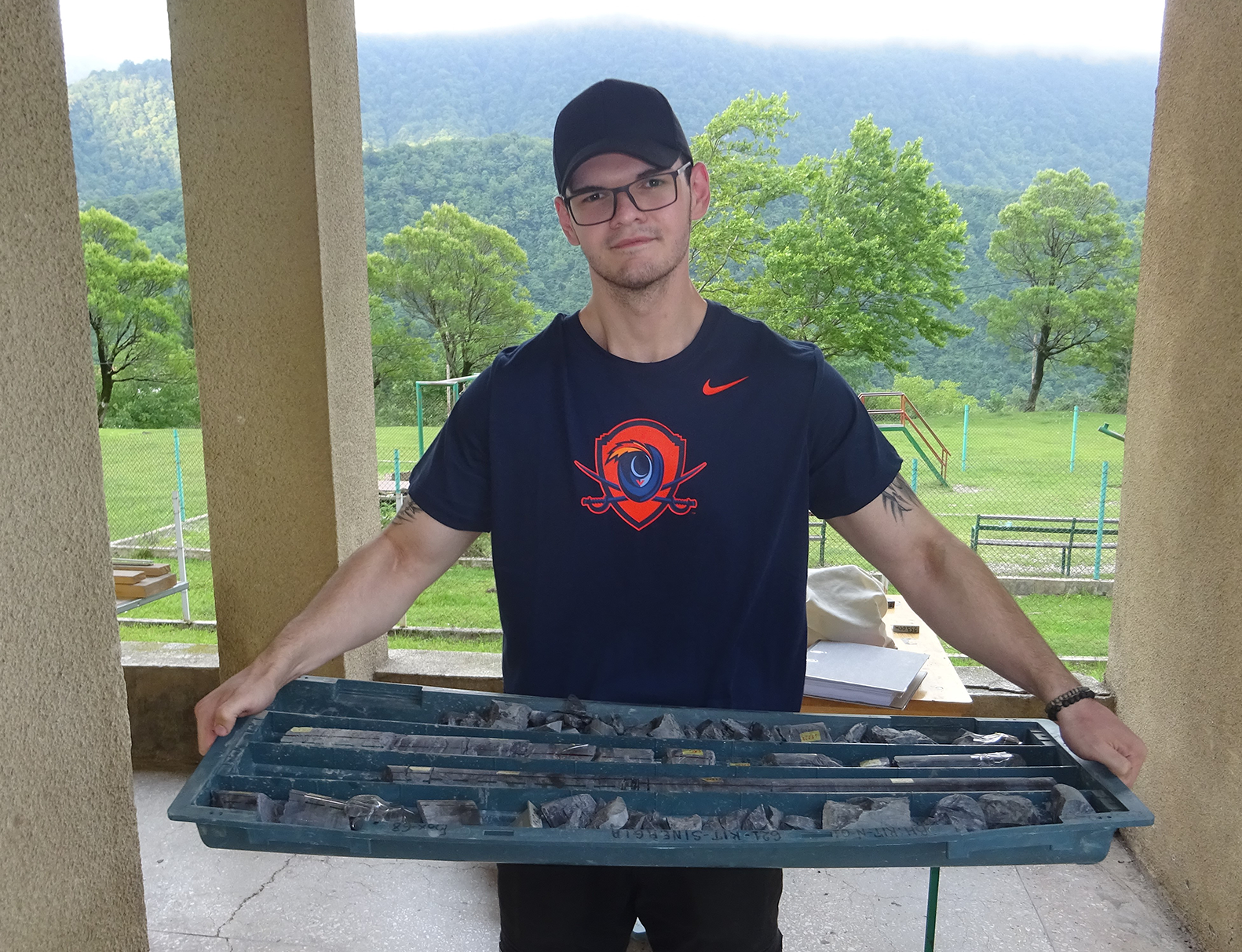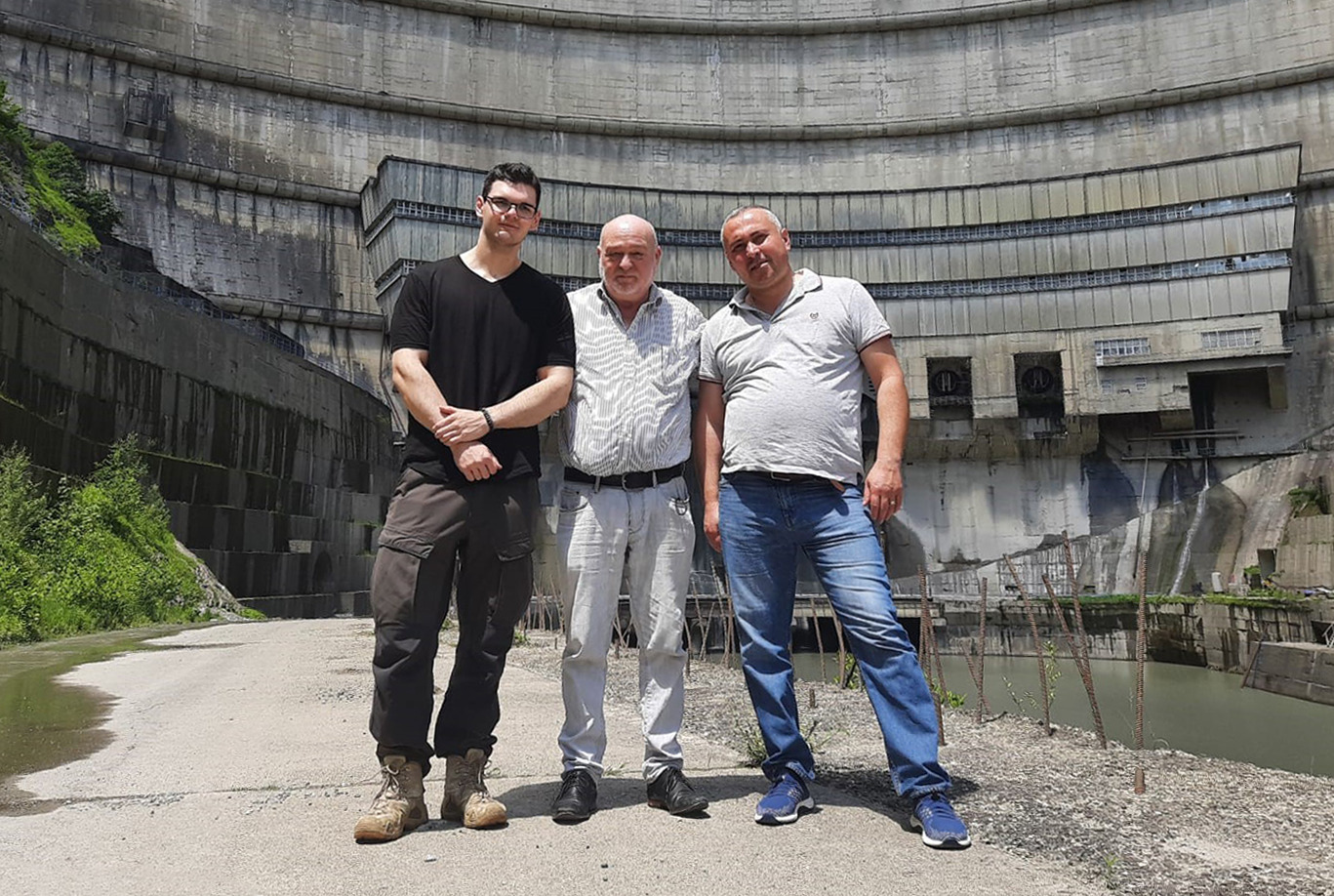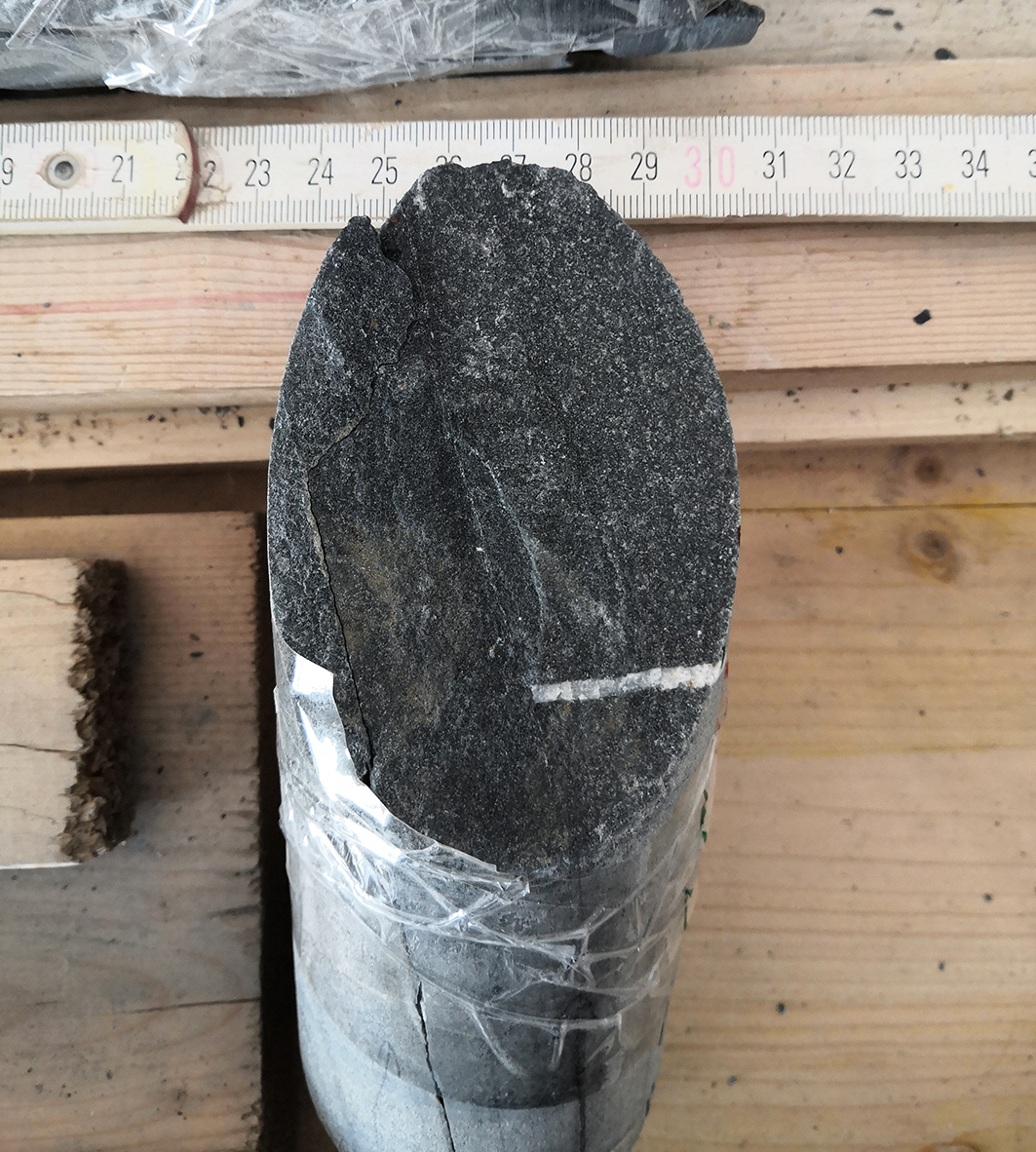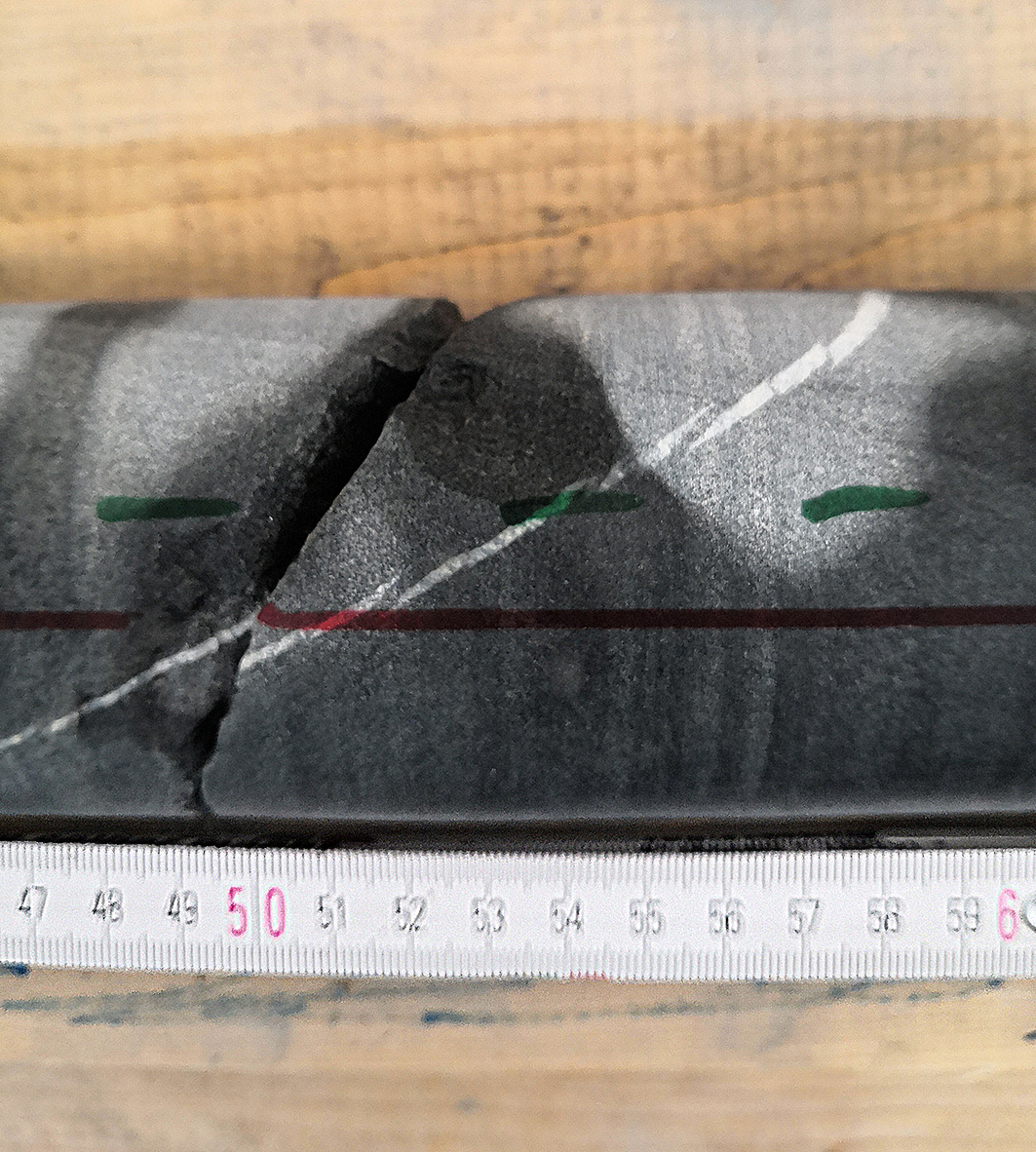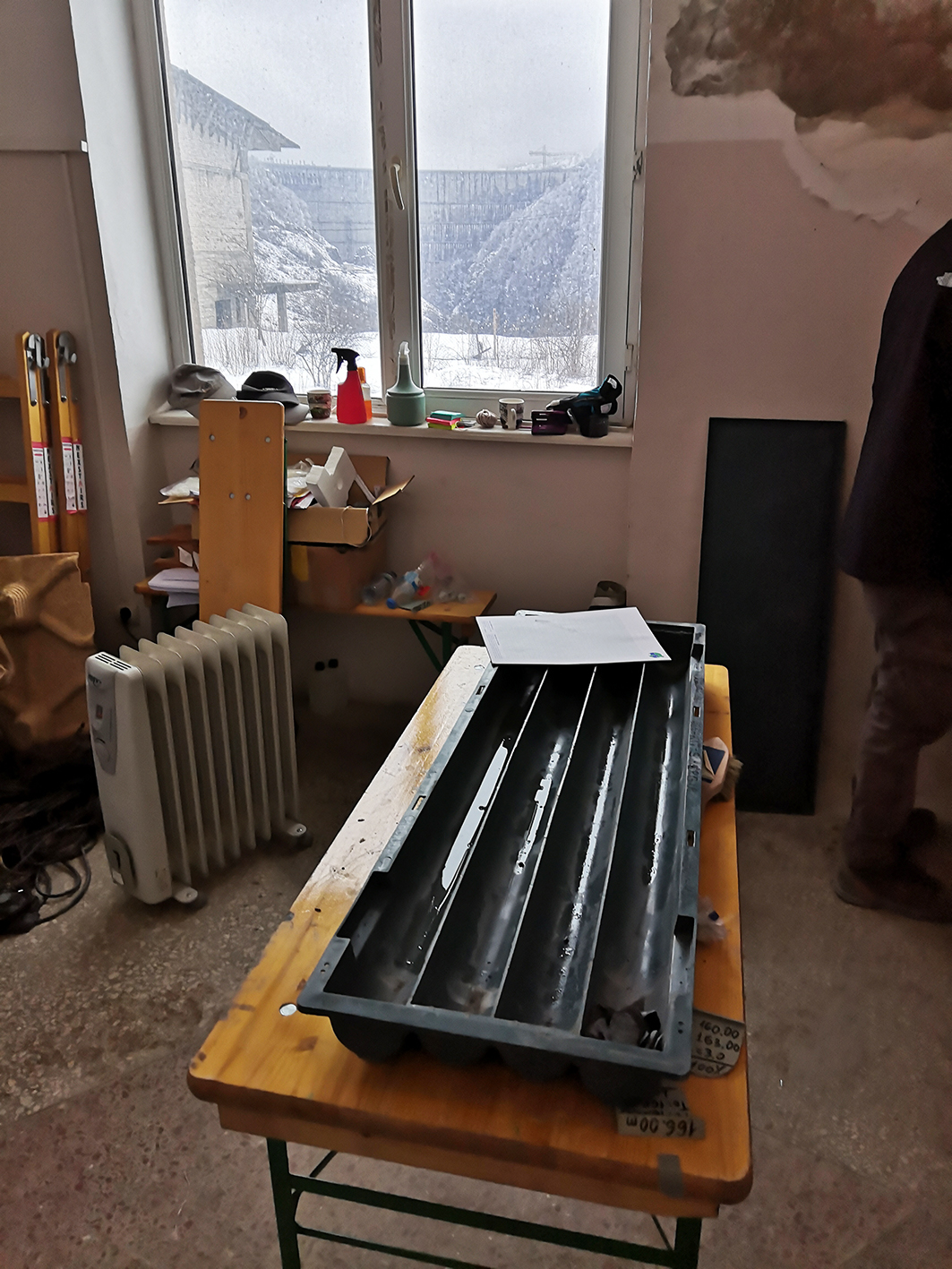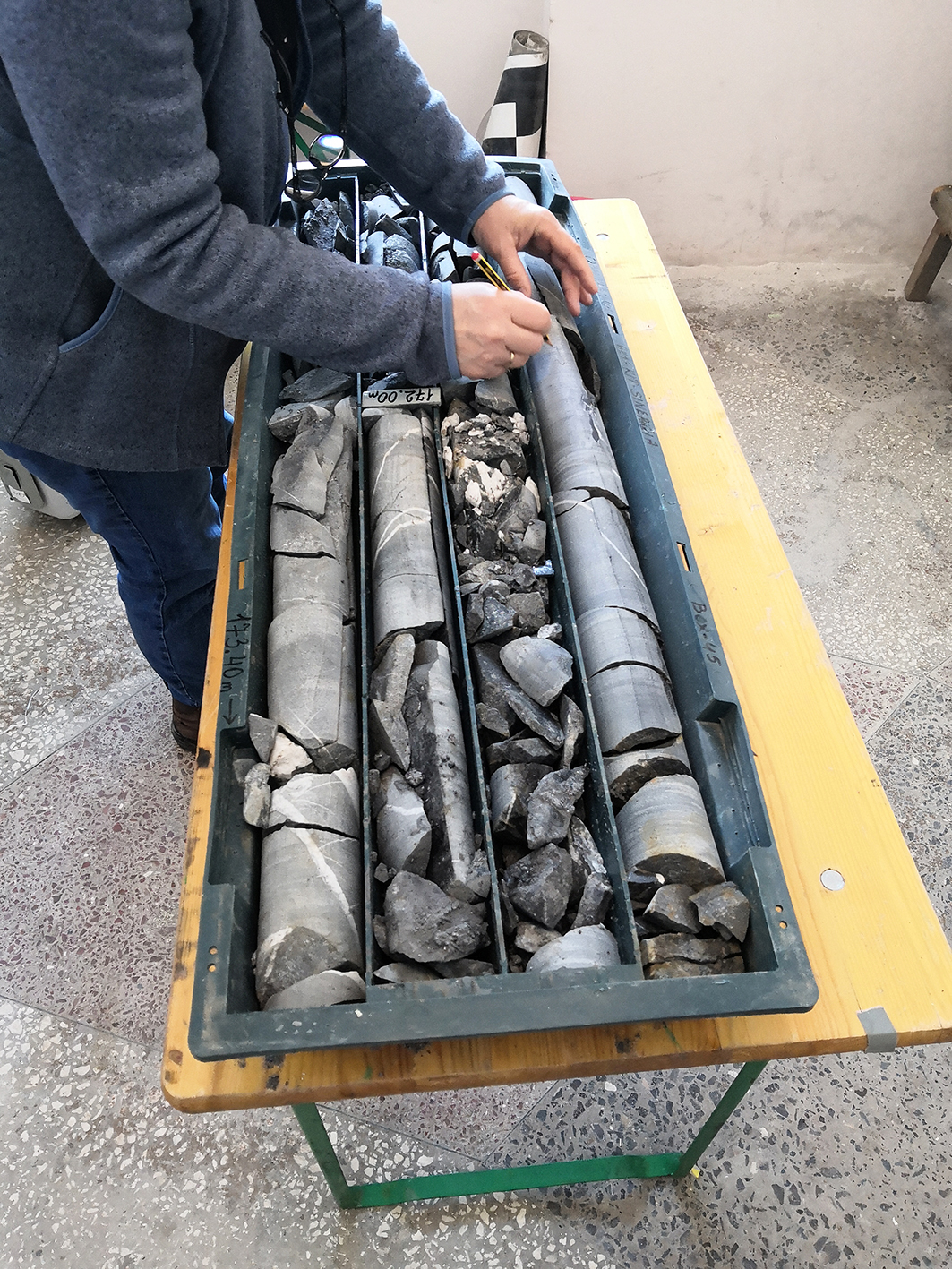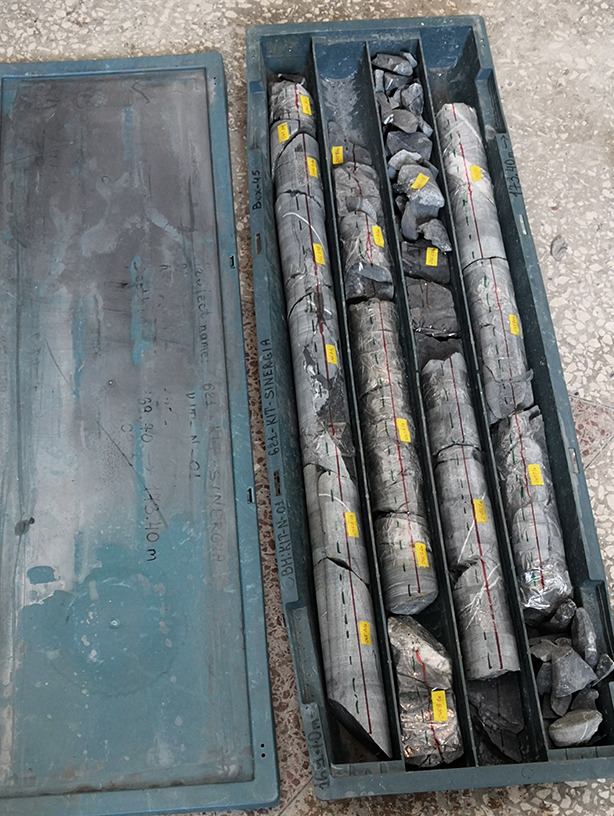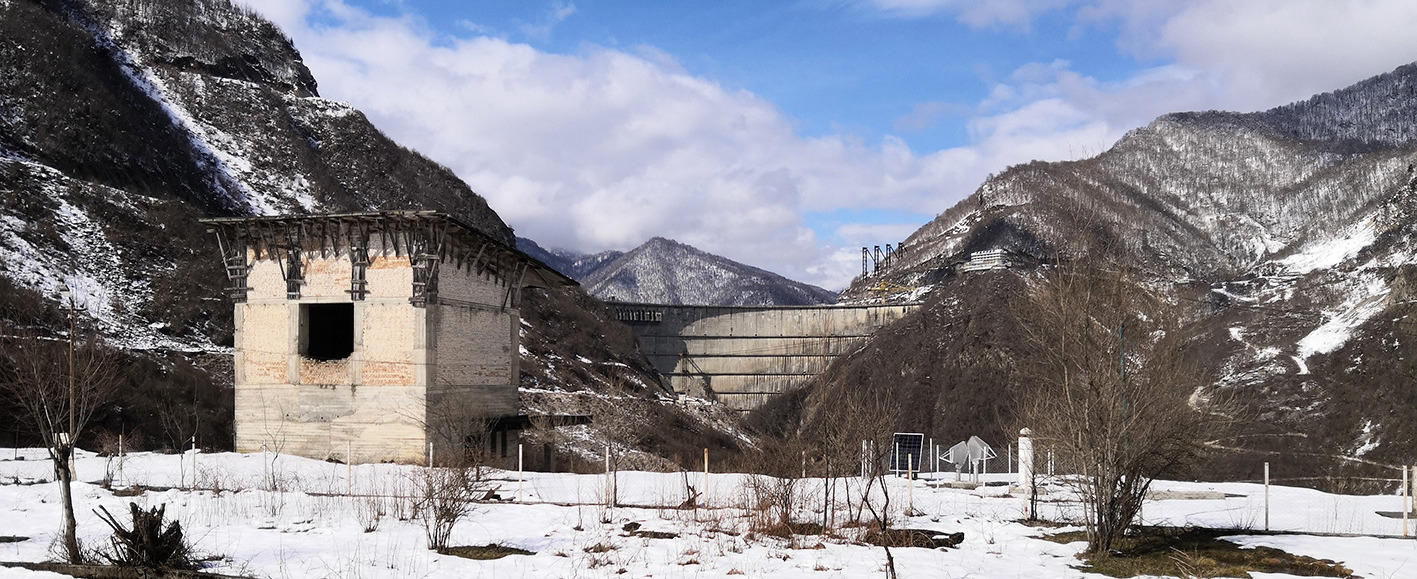Conference Field Trip September
17 September 2022
Saturday, September 17 2022
We had been very happy that representatives of BMBF and the German Embassy in Georgia joined the field trip for which the weather war excellent. Numerous stops enabled to provide an overview on the DAMAST activities (>> Download Field trip guide). In addition to the stops which had been foreseen in our field trip guide Director Mebonia and Director Chania from Engurhesi. Enabled to visit Shtolna-1 which is the access tunnel for the power tunnel (9.5 m in diameter) and which leads to the butterfly valves, which can stop the water flow in the power tunnel which can be up to the impressive amount of 450 m³/s of water.
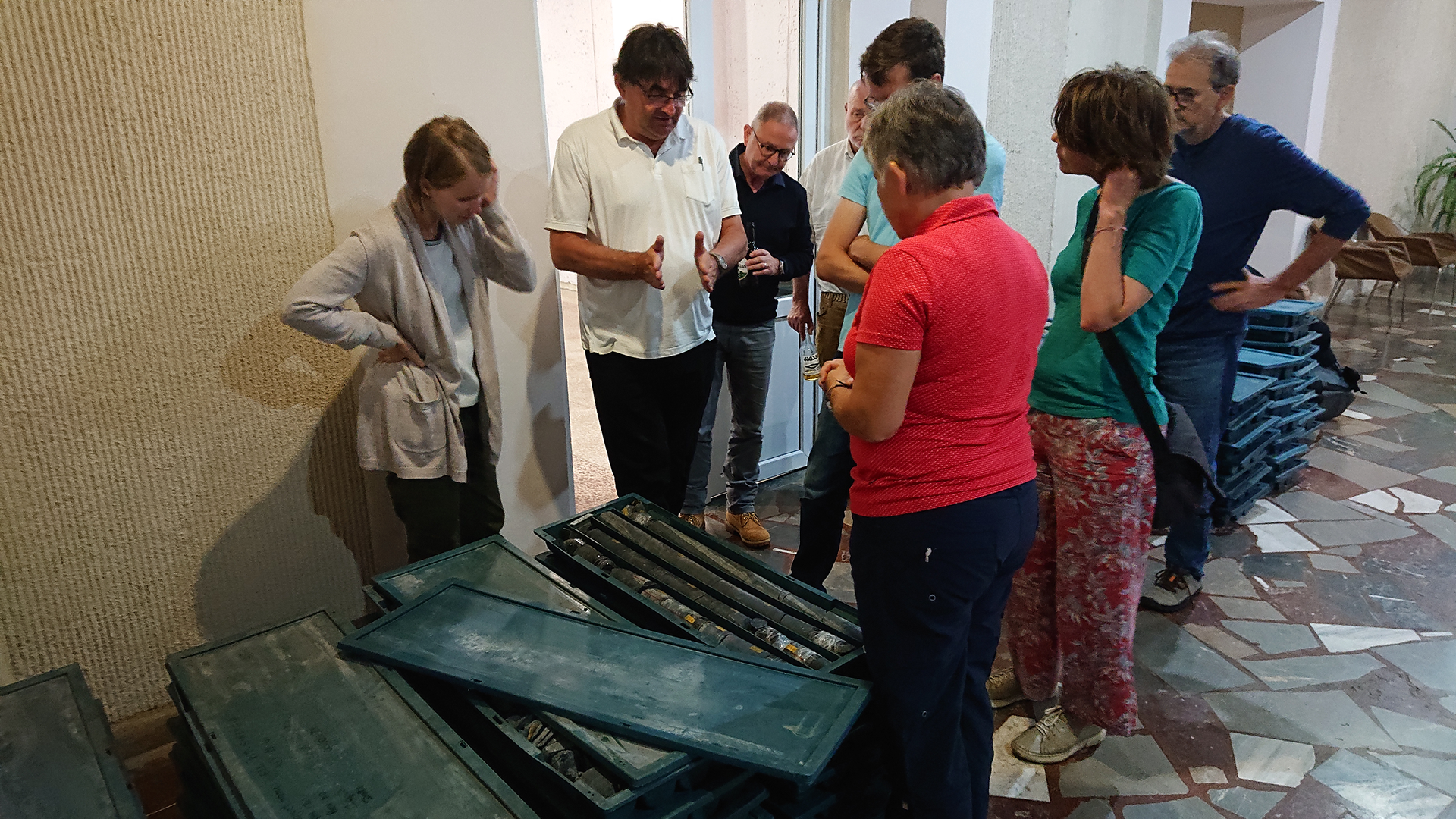
Visiting the drillcores which had been transported to be close to the core scanning unit.
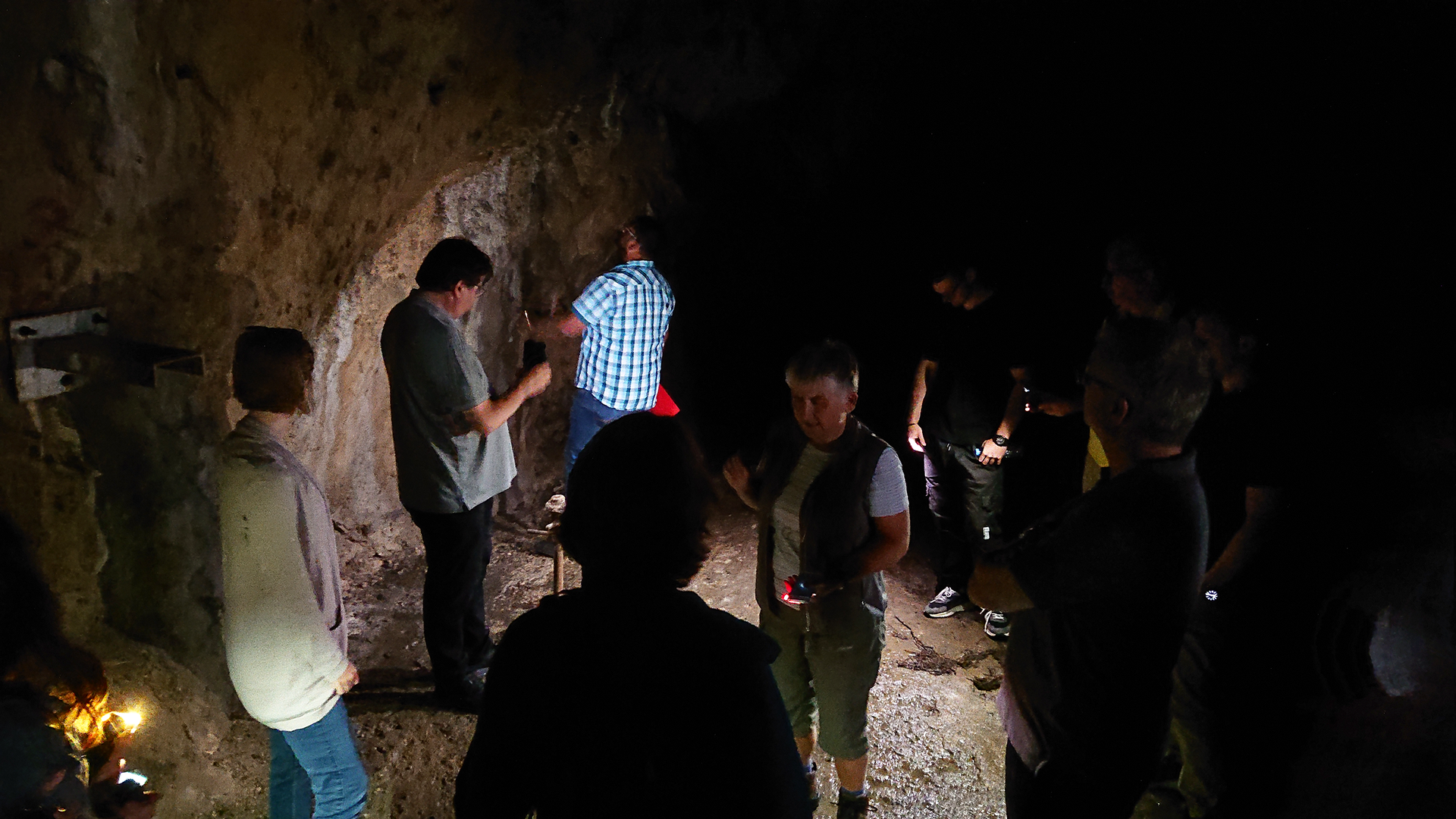
This tunnel on the left bank of Enguri river contains drill holes which had been used for the monitoring in DAMAST.
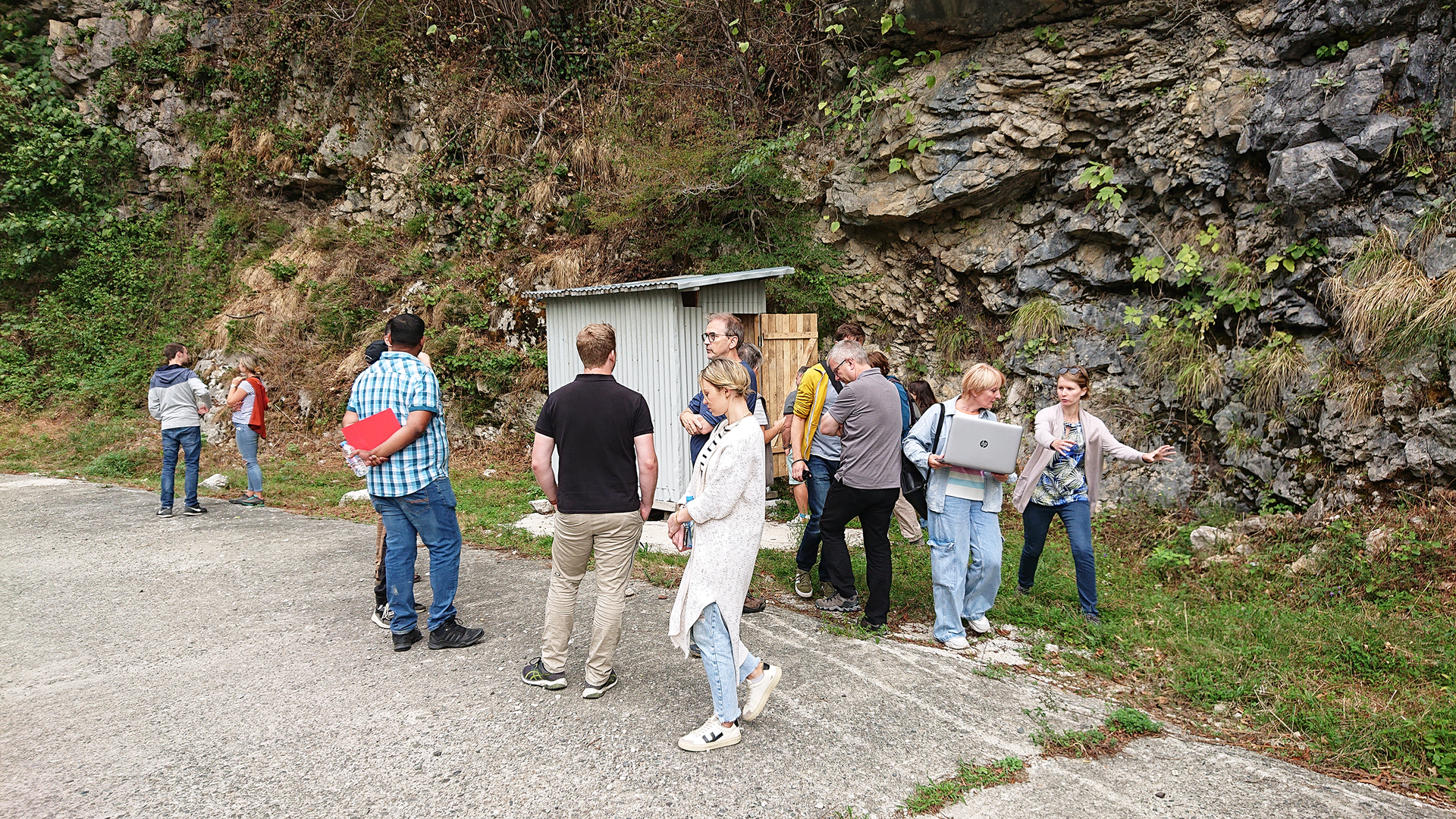
The little hut (which we call villa Rietbrock according to the head of GPI J) contains the equipment to store the data of the DAS cable which is installed in drill holes and along the road as a very new type of seismometer.
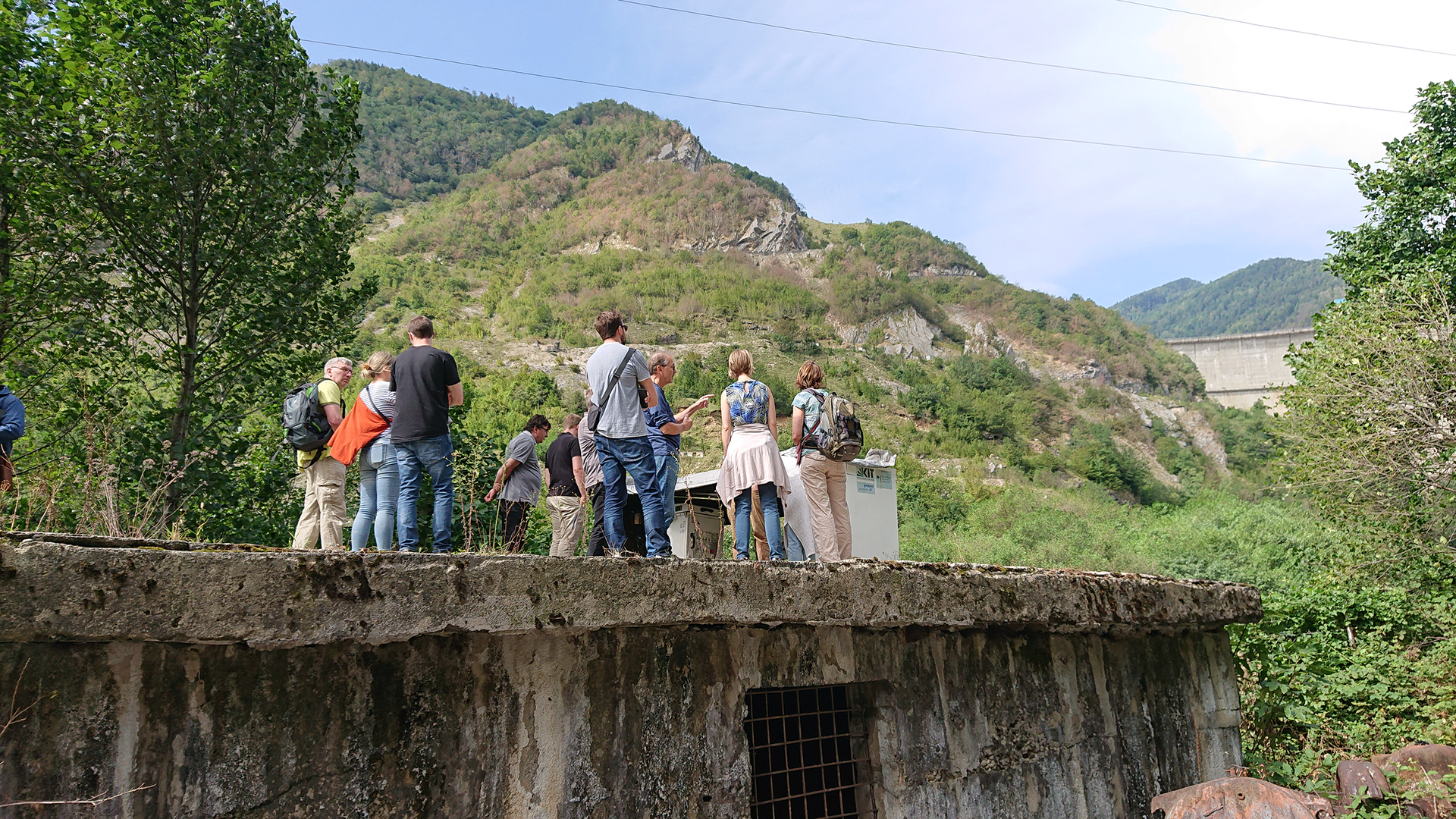
In the little shelter, the ground-based SAR equipment is located which scans the wall of the dam every 2 minutes.
In the evening the group went inside the Enguri dam from the right bank to the left bank and there was a special surprise waiting on the left bank, namely Singer Liza Mebonia who gave a great performance and impressed the field trip participants with her voice. Thanks to company Piewak & Partner to make this event possible. The evening ended under the walls of Enguri high dam with some drinks and Liza singing under the stary sky of Potskho Etseri.
Field Trip August/September
Geomechanics Field Trip
24 August–10 September 2022
Saturday, September 10
Final logging of KIT-Spartak well with the acoustical televiewer below 200 m. As in 2020 for KIT-1 it was necessary that the drilling team had to build in the drill string and we went with the logging tool through the drill string. Thanks to Eduard Scheck of BLM who made it happen.
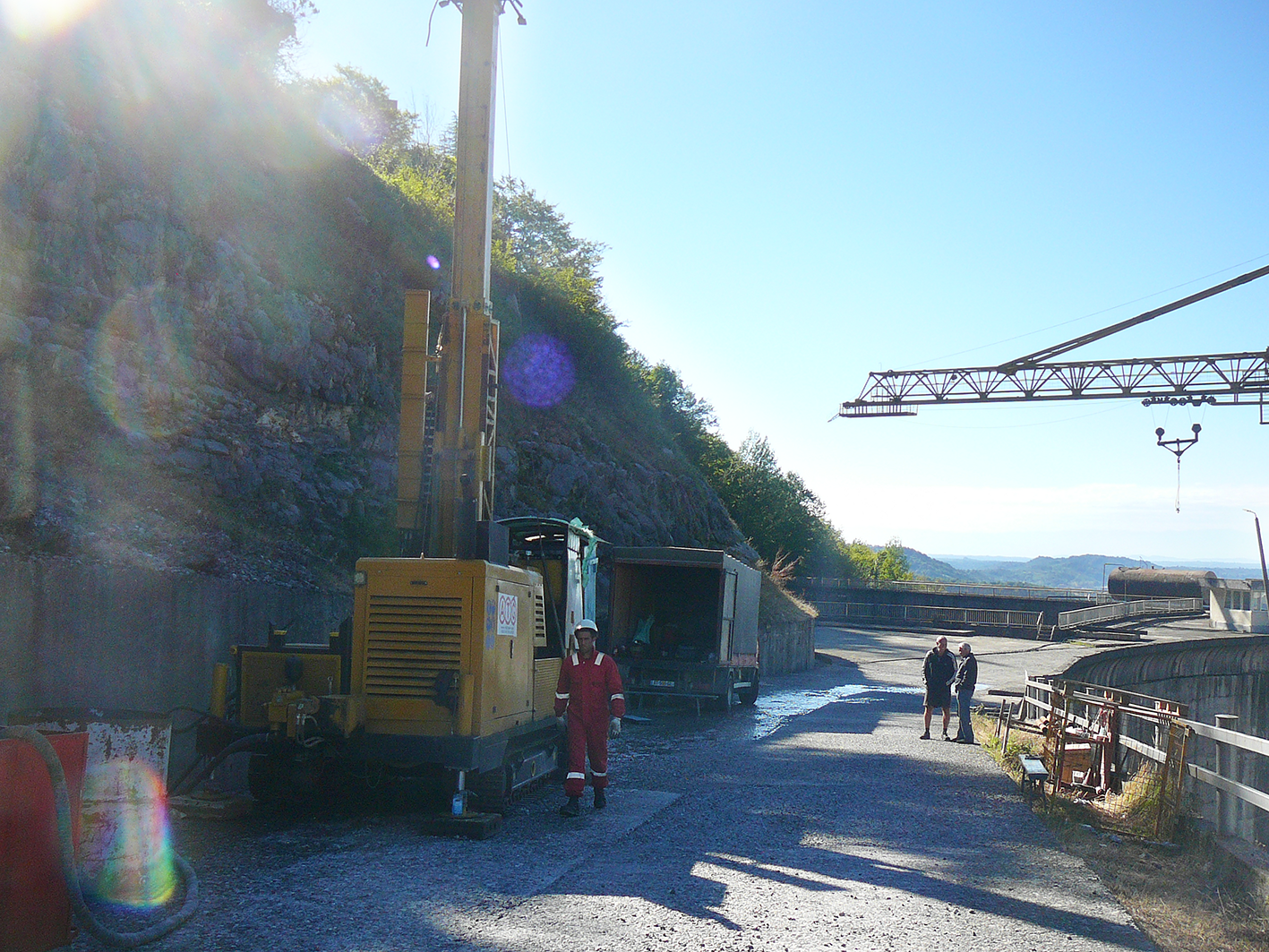
Friday, September 9
Logging with acoustical and optical televiewers to a depth of 180 m. There the optical televiewer got stuck and we decided to develop a strategy to obtain logging data from below 200 m depth because the drillers told us that this is a depth range with lots of broken material in the borehole.
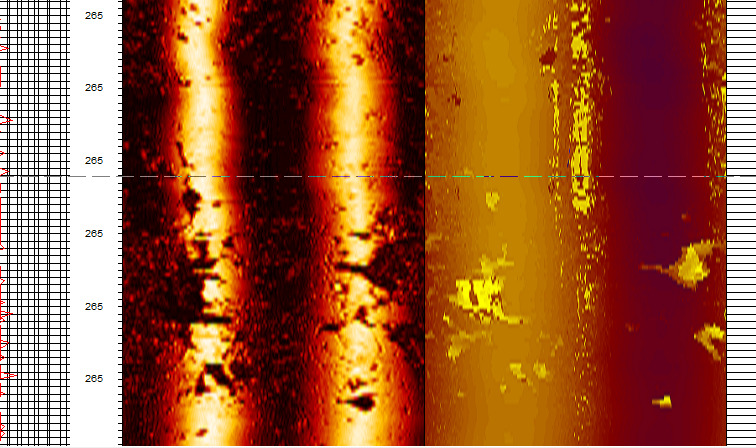
Thursday, September 8
Spartak well is finished. Hurrah. A depth of 298 m was achieved right in time before our logging expert Eduard Scheck of BLM arrived.
Wednesday, September 7
Arrival of optical televiewer, tripod and core scan. The latter waits outside for the drillers to help lifting it over the staircases.
New Drilling Activities at Enguri Dam
On August 24 the new Drillhole KIT-Spartak was spudded at the Enguri Dam. The borehole serves as a measurement borehole for recording the stress field and as a monitoring borehole for the scientists at Tbilisi State University. In this way, changes in the rock can be monitored over the years. In addition, it is also possible to carry out targeted tracer tests with this borehole in order to explore the permeability of the rock and flow paths in the area of the dam.
On August 29 the drillhole has reached already more than 100 m depth.
Dr. Thomas Röckel from Piewak & Partner and Lukas Müller from KIT are accompanying the field works and immediately investigate the drill cores.
Structural Geological Field Trip (DAAD-Sustainable Development Goal Caucasus Project)
20–27 July 2022
Field Trip to the Enguri Dam and its surrounding area from 20-27.07.
A team of structural geologists from KIT and TSU together with students from TSU joined to investigate the orientation and shear direction of fault systems in the Enguri dam area by boat, drone and afoot. The goal was to verify faults that were previously compiled from old geological maps and satellite data. Therefore, suitable rock outcrops exposing potential faults were targeted and orientation as well as shear indicators of fault planes were measured using a geological compass. These structural data will contribute to better understand the fault system of the Enguri dam area.
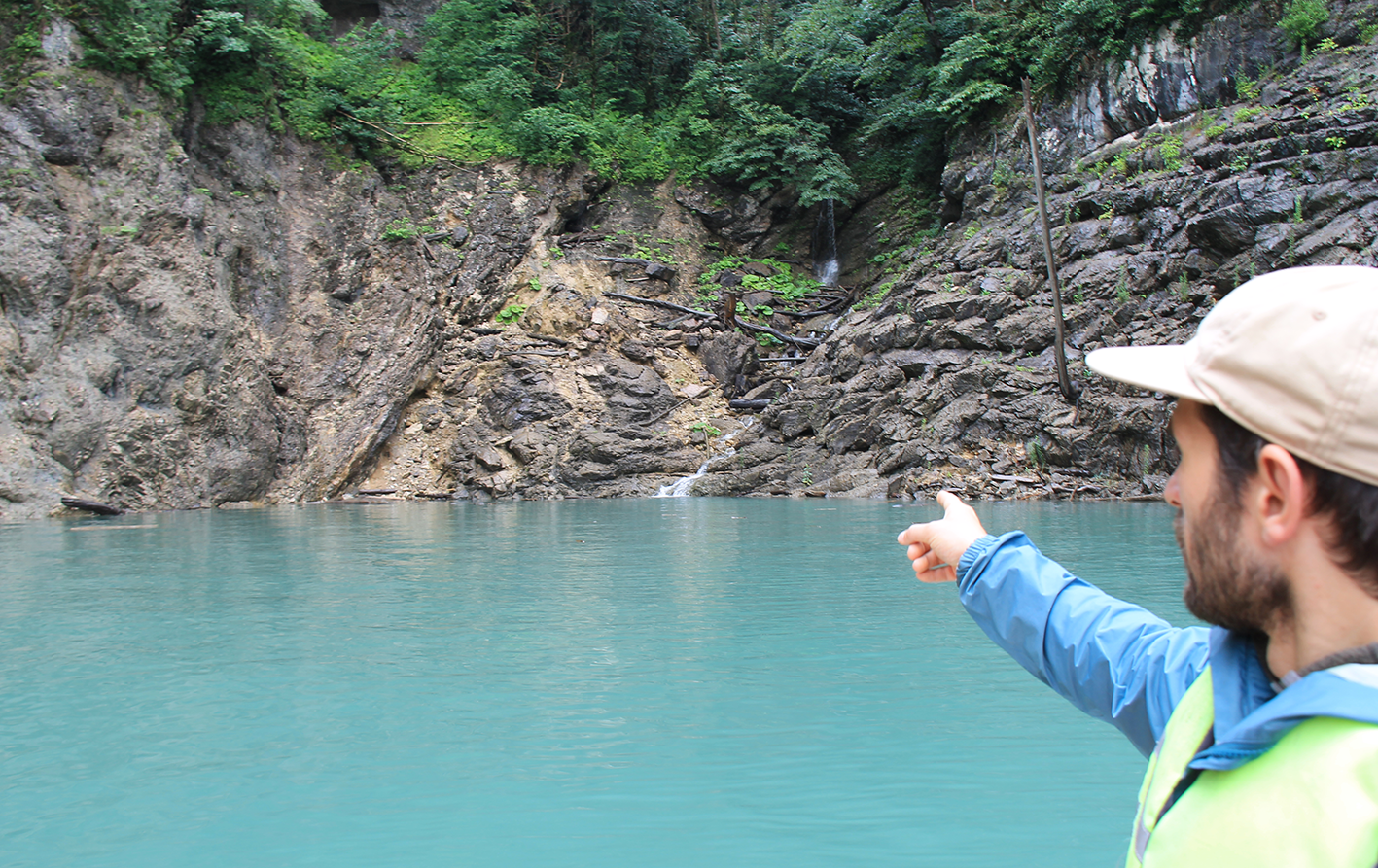
View onto a fault zone marked in old geological maps. This promising rock outcrop was approached by boat. It shows deformed limestone beds and comminuted rock material indicating faulting.
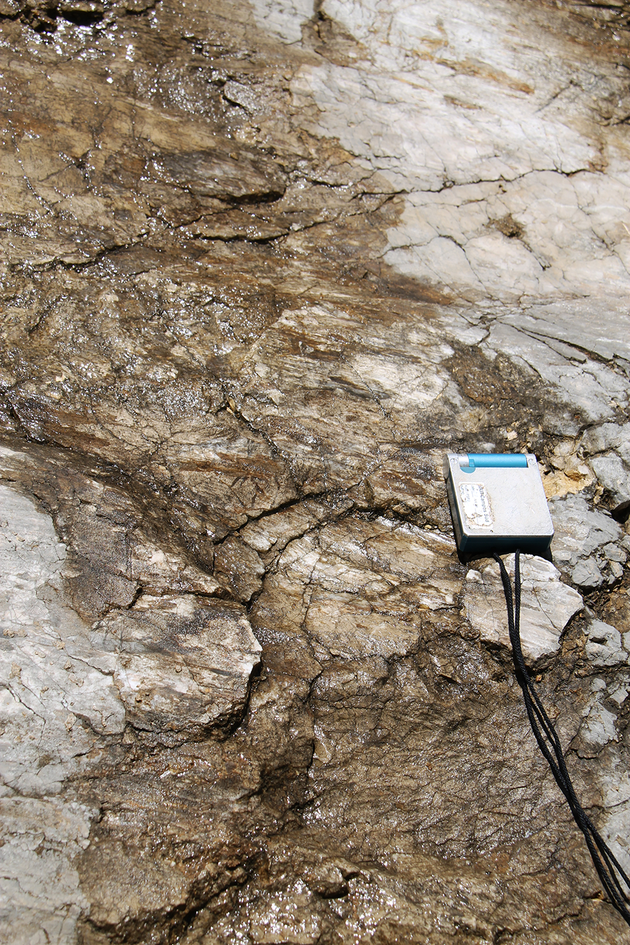 |
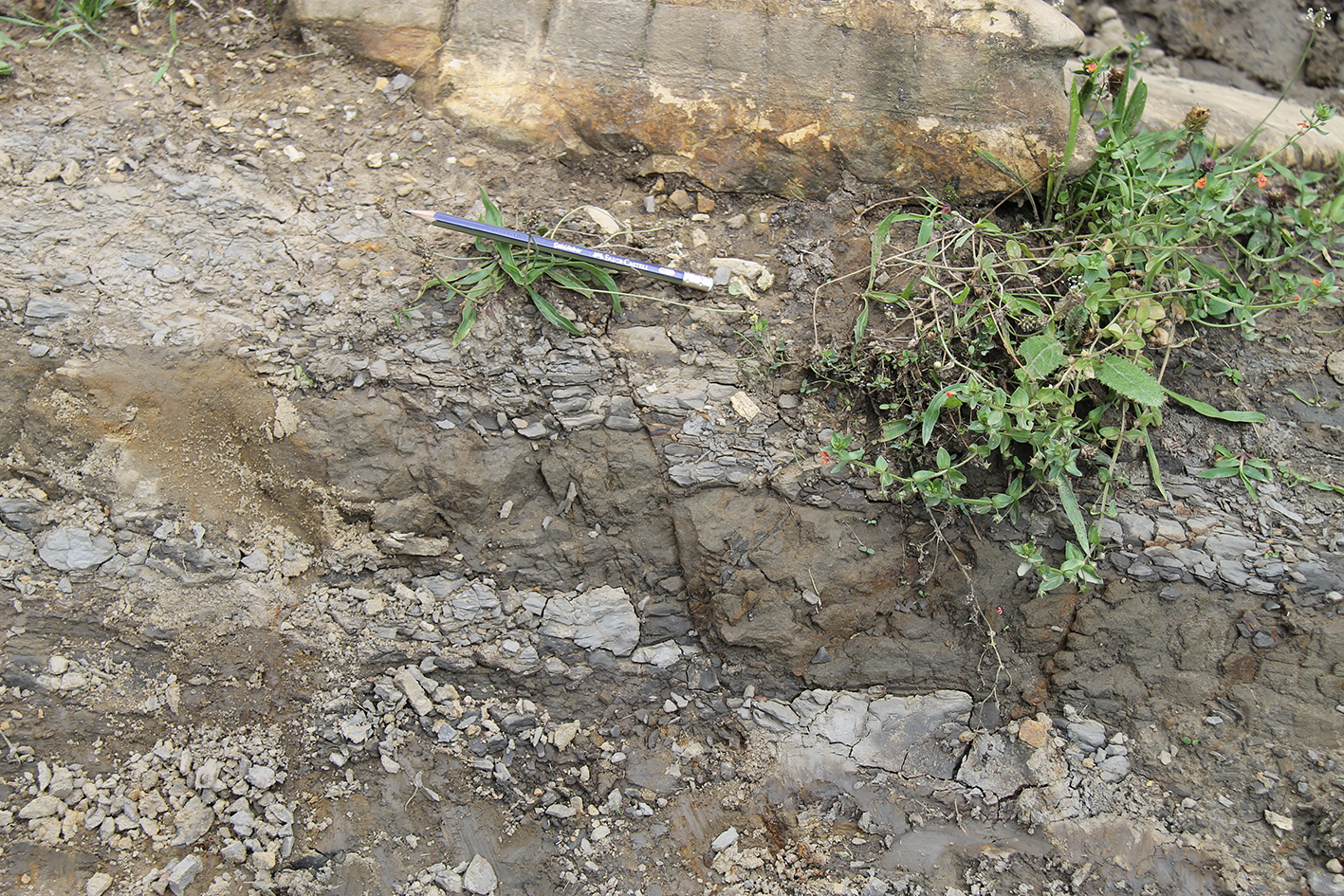 |
Slickensides on fault planes helped to infer shear direction. Structural data of slickensides and (micro-) faults were acquired with a geological compass.
Geophysical Field Trip (DAAD-Sustainable Development Goal Caucasus Project)
1–15 July 2022
Field Trip to Nenskra-Valley from 07-15.07
In the Nenskra-Valley Temut joined the team and in total four more broadband stations have been installed. The logistics were a bit problematic here, as the partly high water levels made it difficult for the jeeps with equipment to get pass the river. Nino and her team helped during the construction of the four stations and will set up the last station (NE01B) on their own.
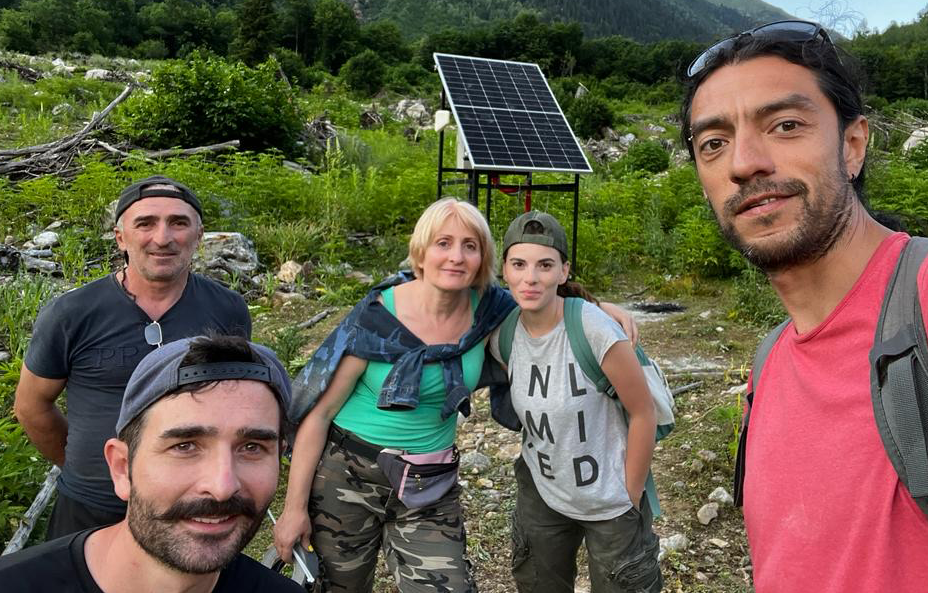 Set-up Team
Set-up Team
Geophysical Field Trip 01-07.07 to Enguri Dam
Felix Bögelspacher from GPI has connected the optical fibre cable of KIT-4 well into the DAS network.
For this a channel was milled into the road near the police station, the fibre optic cable was installed and afterwards it was concreted.
Next to the police station a small switch box was installed and the connections of the individual strands have been spliced. The roof of the hut where the fibre-optic distributed acoustic sensing equipment is located was damaged by a rock fall and the team Felix Bögelspacher, Hans Agurto, Nino Tsereteli and Tako Shubladze repaired it.
Furthermore the existing seismic stations around Enguri dam with the ground seismometers have been checked.
July 7-13
New cores have been picked up in the warehouse and had been transported to Enguri Hotel for core analysis. Alexander is now trained to identify core structures such as bedding and special type of core fractures.
The team could work outside due to improved weather conditions.
Thomas showed Alexander and Manfred the diversion tunnel of the planned Khudoni dam and structures that had been built in 1990s for the dam, which had never been finished.
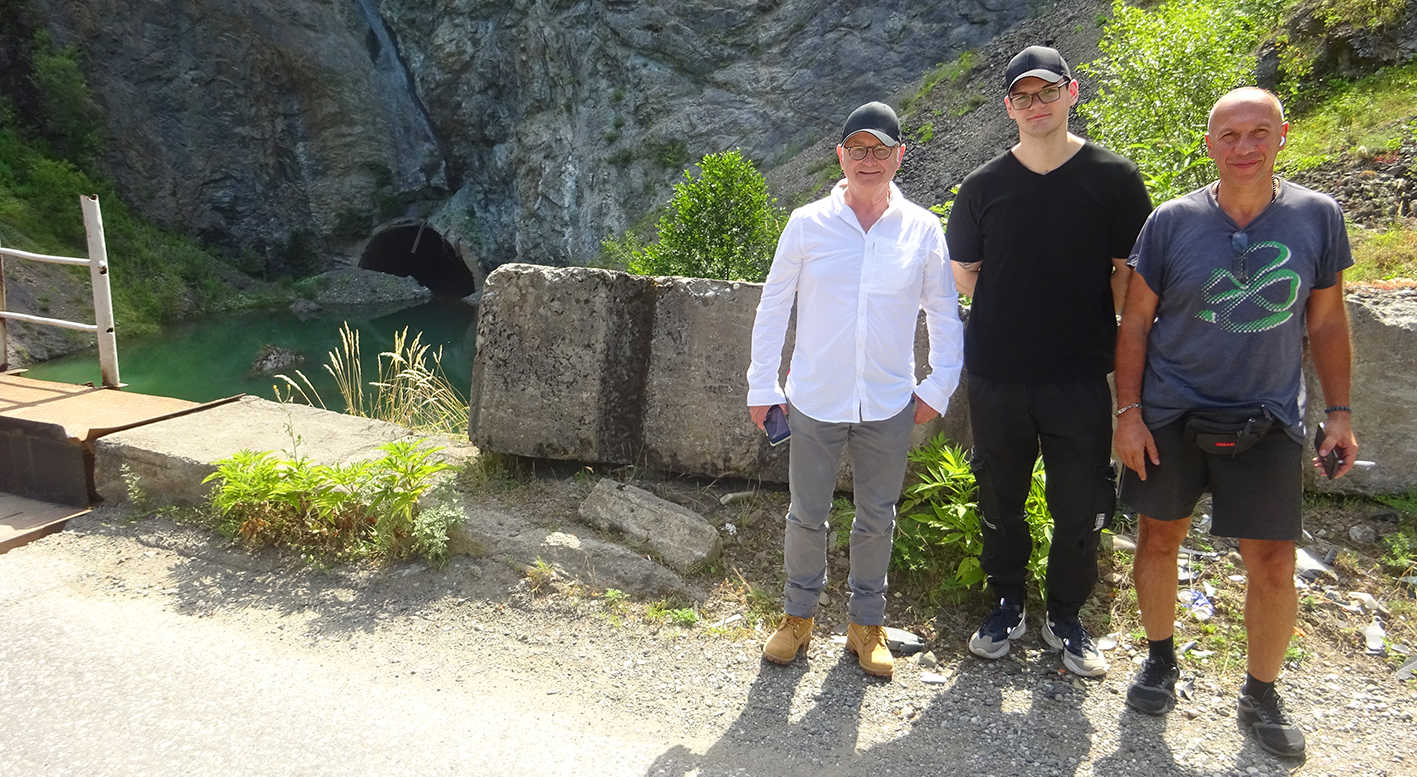
Angela, one of the ladies in hotel Enguri has broken her arm. Manfred Piewak helped with the correct donning of a triangular sling. We wish Angela that she will recover quickly.
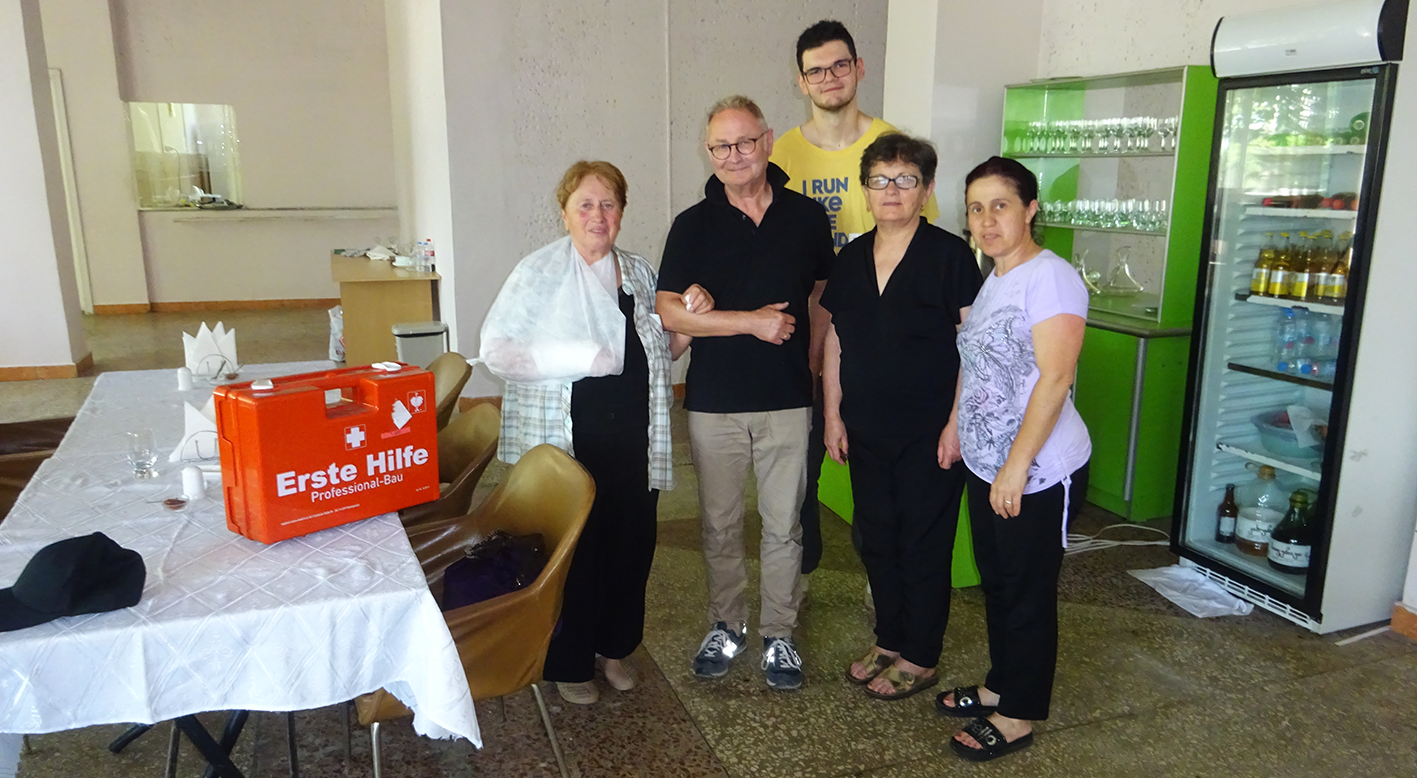
Tuesday, July 5 & Wednesday, 6
Ongoing works for the analysis of the drillcores of the NENSKRA well.
Due to better weather conditions, the team has installed the lab outside (for better daylight).
The figure shows a core box with a lot of puzzle pieces.
Can you image why the nickname of Alexander is TARZAN?
He can carry the core boxes with 4 m of drillcores inside alone.
Friday, July 1 & Saturday, 2
Building up of the core analysis station and getting drill cores from the Warehouse with technical support of Engurhesi.
Friday, July 1
Arrival at Kutaissi and local travel to Enguri Dam.
The new team to analyse the drillcores has arrived. Thomas Röckel our experienced geologist will train Alexander Kamensky, a student of George Melikadze at the Georgian Technical University.
Thursday, June 30
Travel to Memmingen and Flight to Kutaissi Airport.
Thursday, March 24
Today we of course worked on the drill cores, but we also got a tour through the dam and found out where already in early times seismic measurements to study the velocities in the foundation have been made. Changes in seismic velocities have been used to address whether cracks have been formed with time. Core analysis went quite well, we are now at core box 57. ... and each box contains 4 m of drill cores in more or less long pieces.
Wednesday, March 23
The weather is quite nice today, however we work indoors because of the temperatures.
Tuesday, March 22
We work on the new cores and prepare together with George Melikadze a proposal for the Shota Rustaveli Foundation.
Monday, March 21
Starting with core analysis we could finish boxes 47 and 48. In the late morning we met Director Joni Chania from Engurhesi and discussed with him future access to shallow boreholes for video and televiewer loggings, the situation of the sediments in the Jvari reservoir. We are happy that DAMAST-Transfer will prolongate our activities here.
Sunday, March 20
We had been analysing 4 core boxes until the evening and prepared box 47 for the analysis. Besides core analysis we started to contribute to a new proposal of our Georgian colleagues George, Shota and Nino.
Saturday, March 19
With 0–3 degrees outside temperature we decided to build up our rock lab indoors. The hotel owners kindly provided a room in the basement and we could also get a small heater with after some time produced slightly higher temperatures. We picked up 7 core boxes (42–48) and started the core analysis. The colleagues from Enguri dam informed us that the station with the GB-SAR requires more shelter against rain. We found our blue plane from earlier logging activities and we will install that on Monday.
Friday, March 18
In the night the team started to reach the morning flight from Memmingen to Kutaissi.
At Kutaissi we have been picked up by Zaza, Misha and Rustam and then went to Zugdidi, where we had the first short meeting with Levan Mebonia. Afterwards we went to Enguri Dam where it had been snowing the days before.

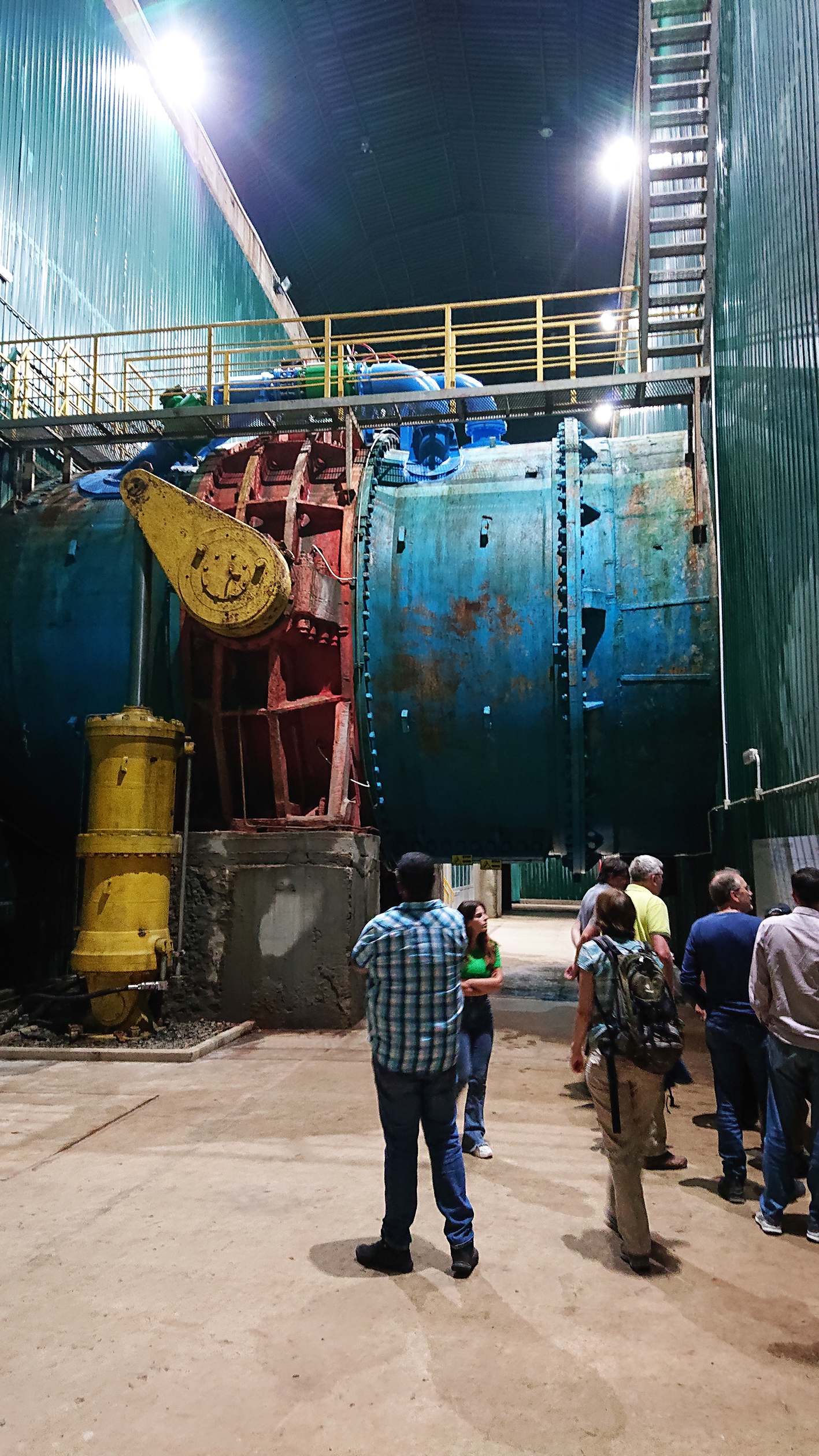
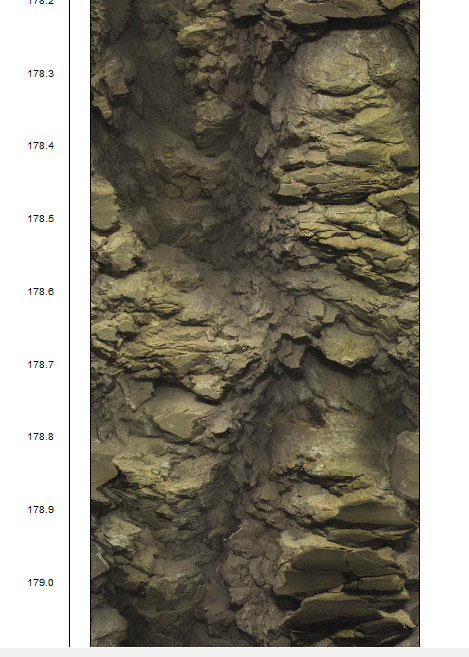
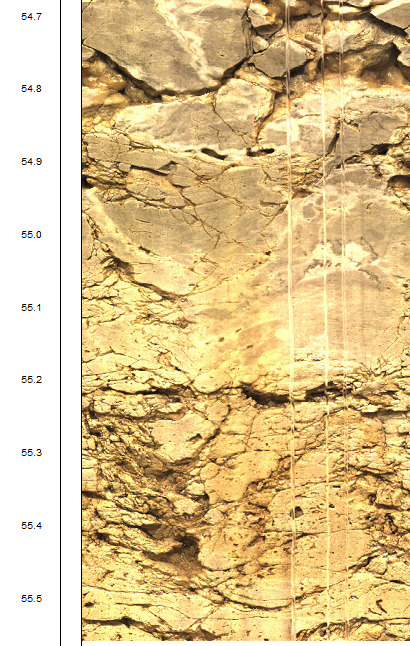
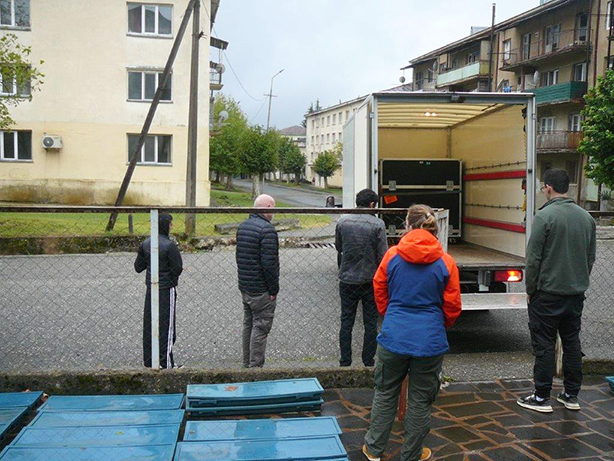
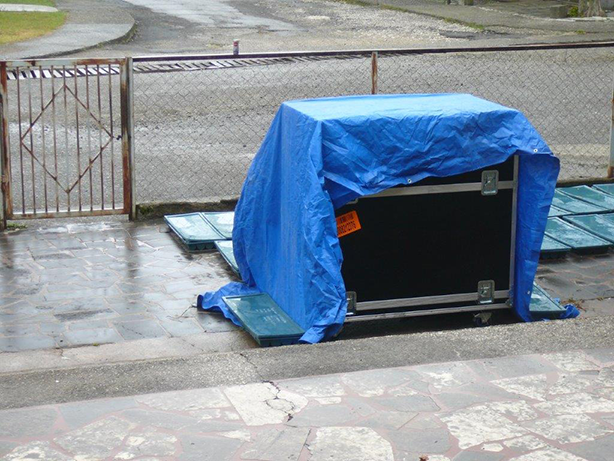
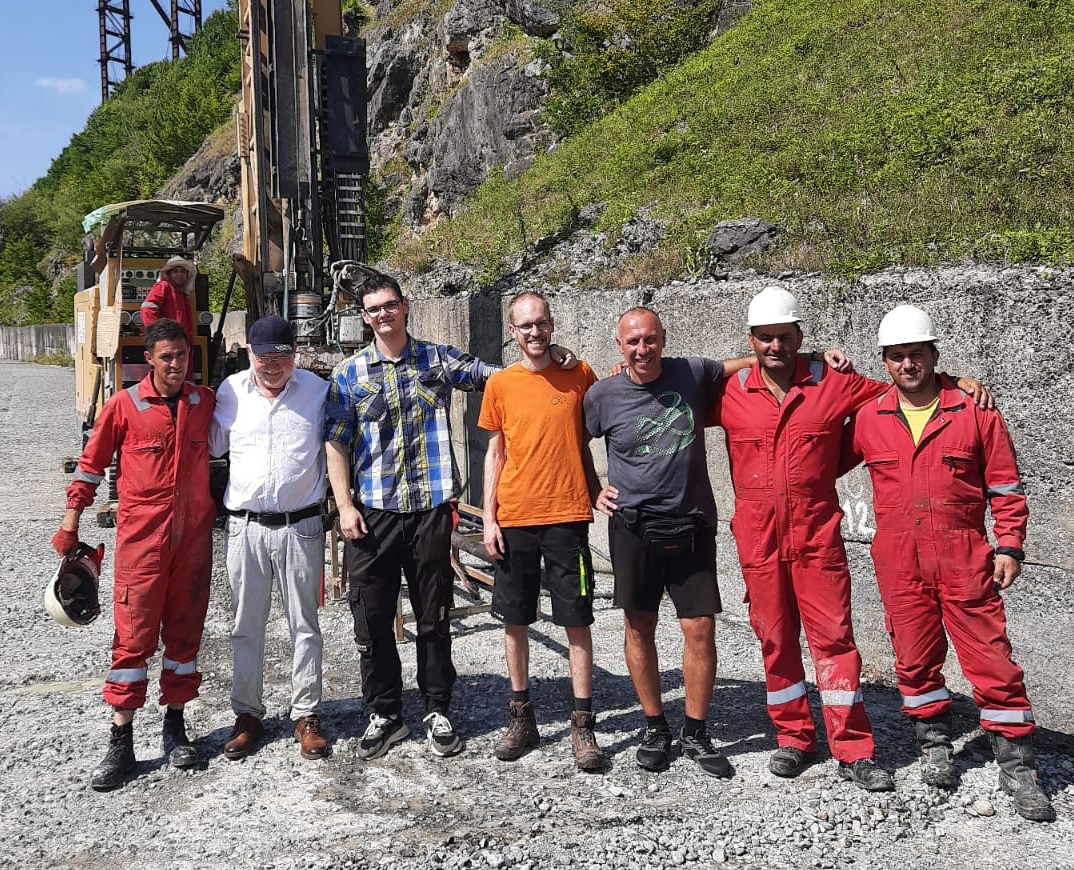
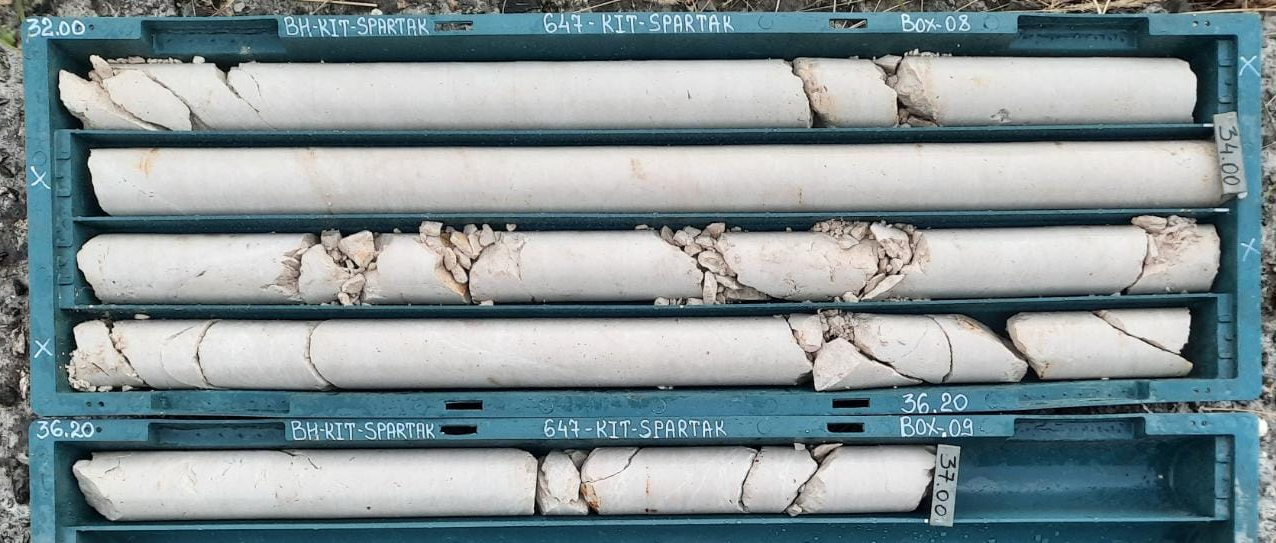
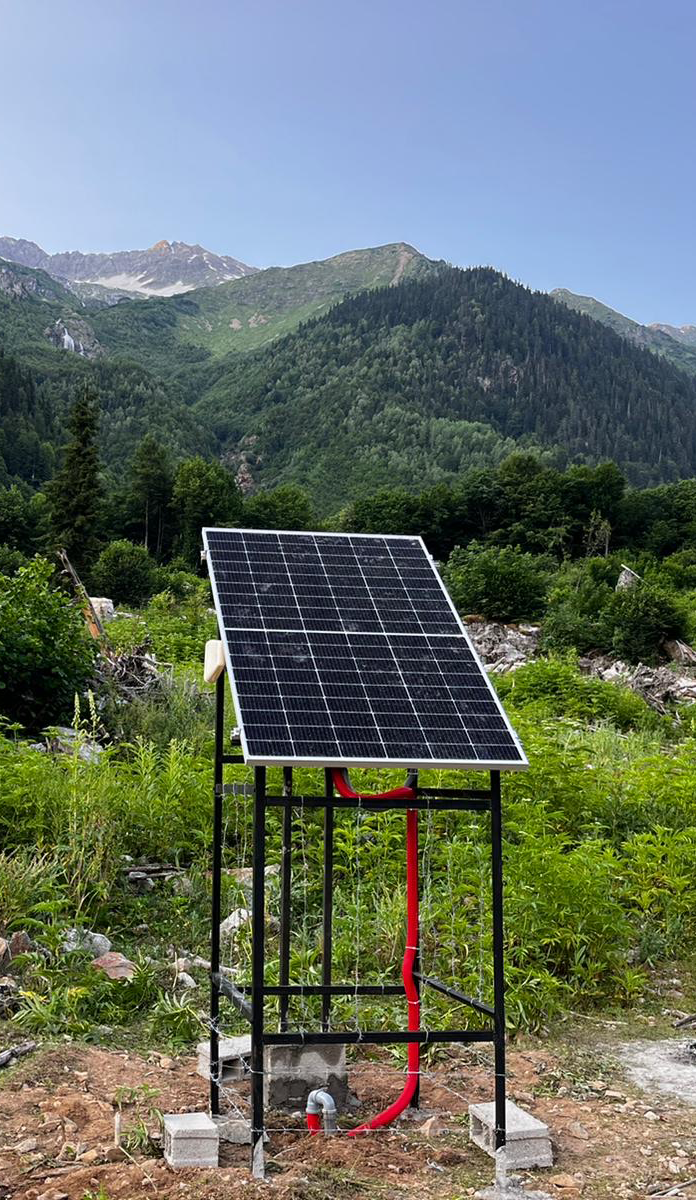 NEO2
NEO2